
How to Use NODEMCU-32S : Examples, Pinouts, and Specs
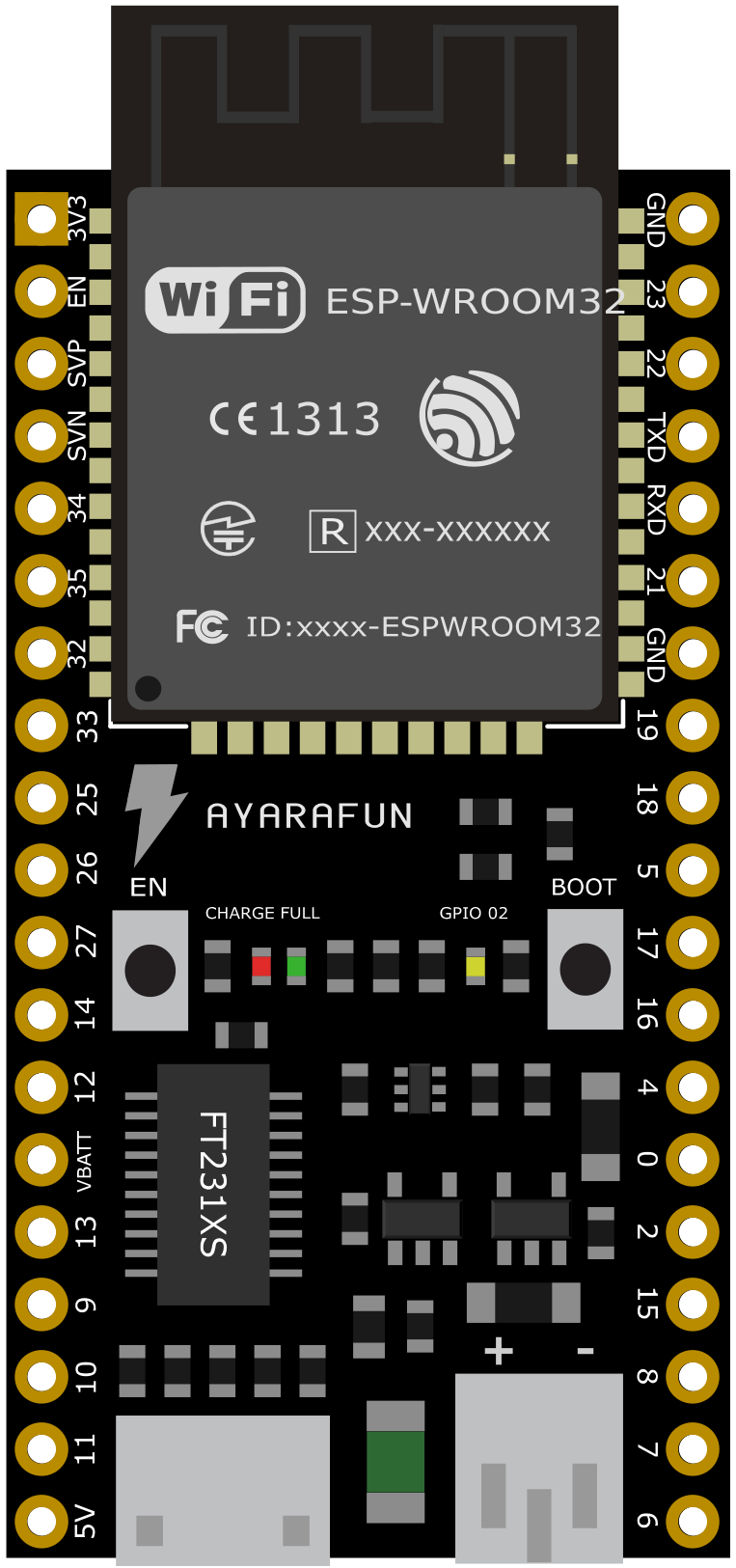
 Design with NODEMCU-32S in Cirkit Designer
Design with NODEMCU-32S in Cirkit DesignerIntroduction
The NODEMCU-32S is a low-cost, open-source IoT platform built around the powerful ESP32 microcontroller. It is designed for developing connected devices and features integrated Wi-Fi and Bluetooth capabilities, making it an excellent choice for IoT applications. The board includes a USB interface for programming and power, a variety of GPIO pins for interfacing with sensors and actuators, and supports programming in both Lua script and the Arduino IDE.
Explore Projects Built with NODEMCU-32S
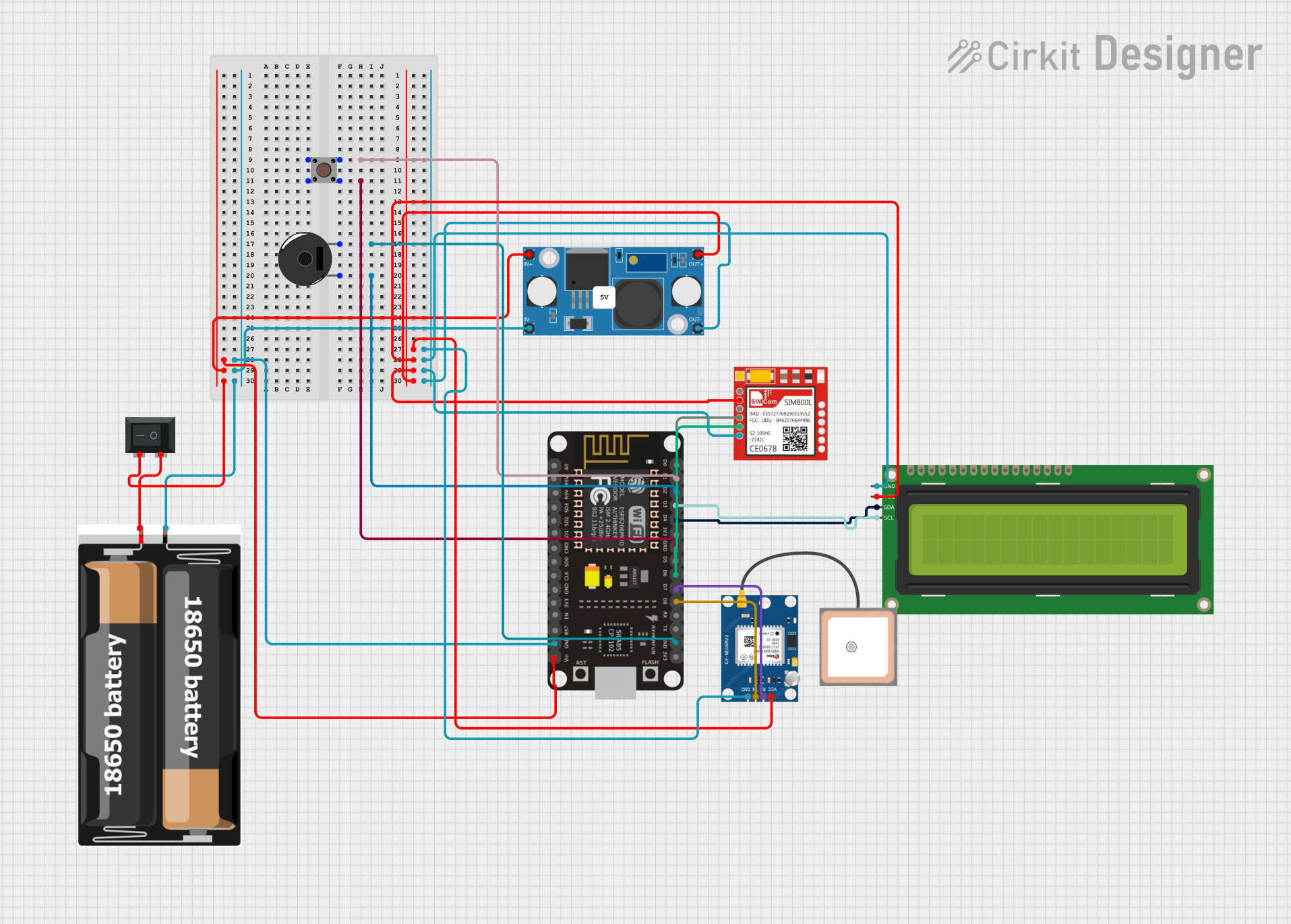
 Open Project in Cirkit Designer
Open Project in Cirkit Designer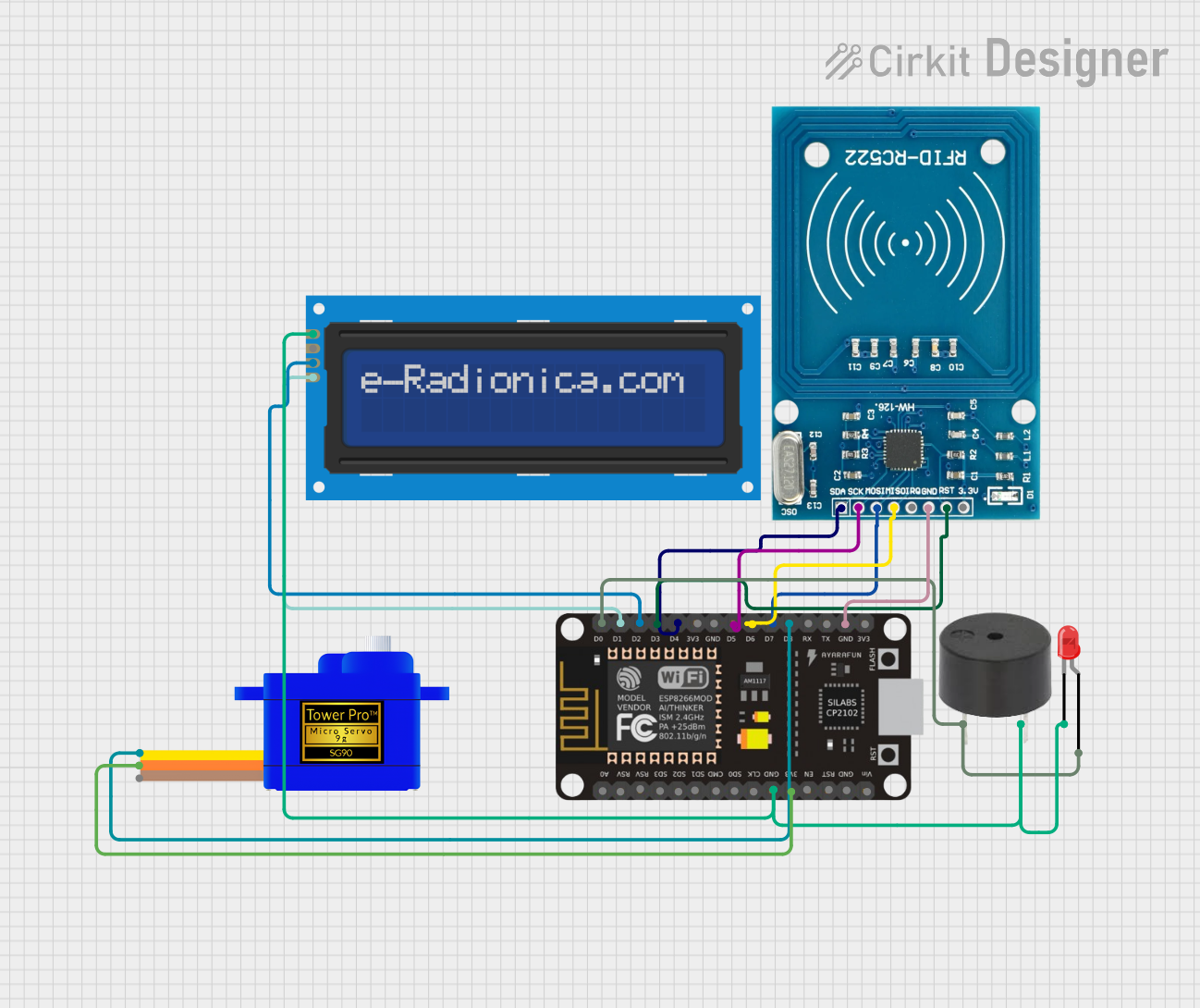
 Open Project in Cirkit Designer
Open Project in Cirkit Designer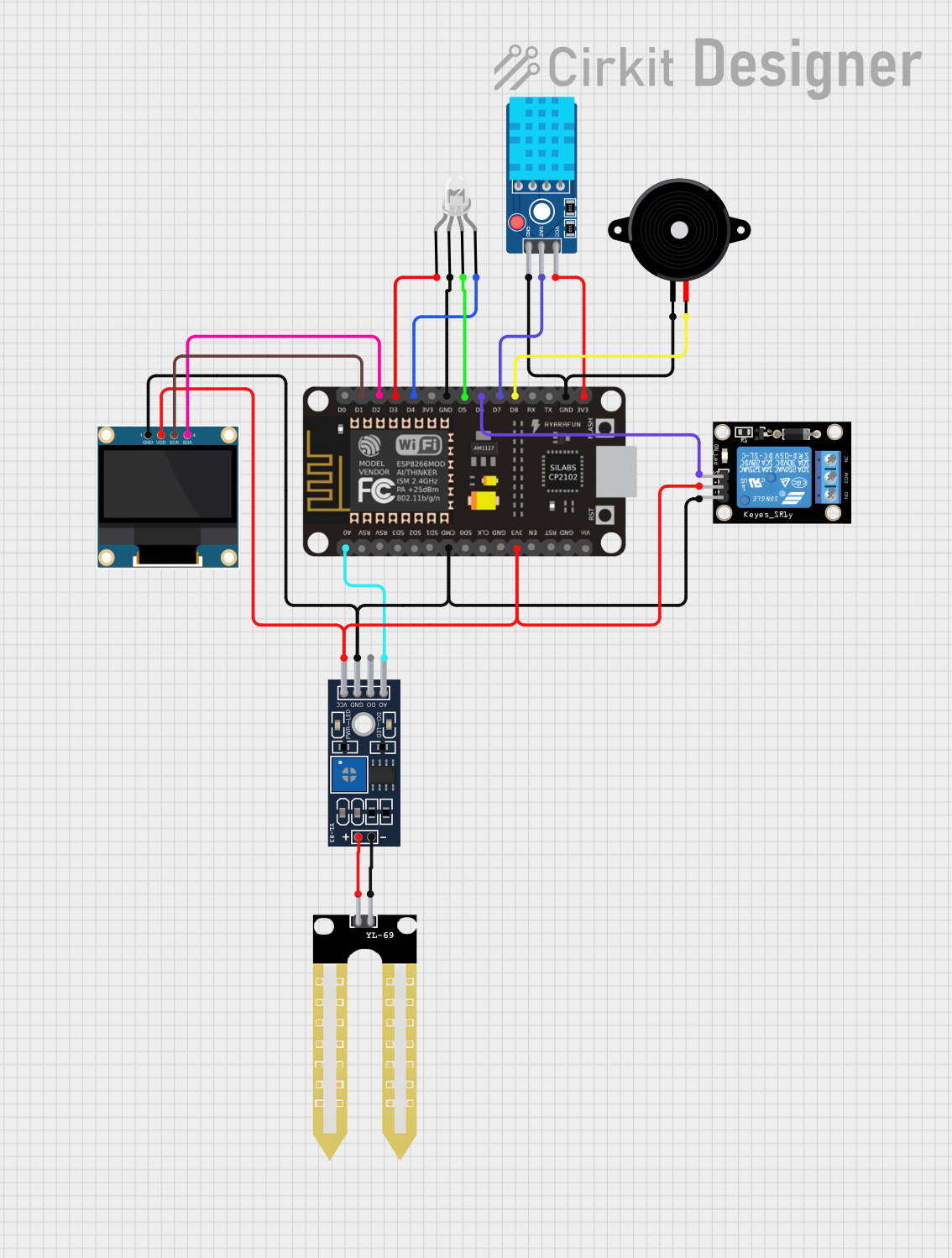
 Open Project in Cirkit Designer
Open Project in Cirkit Designer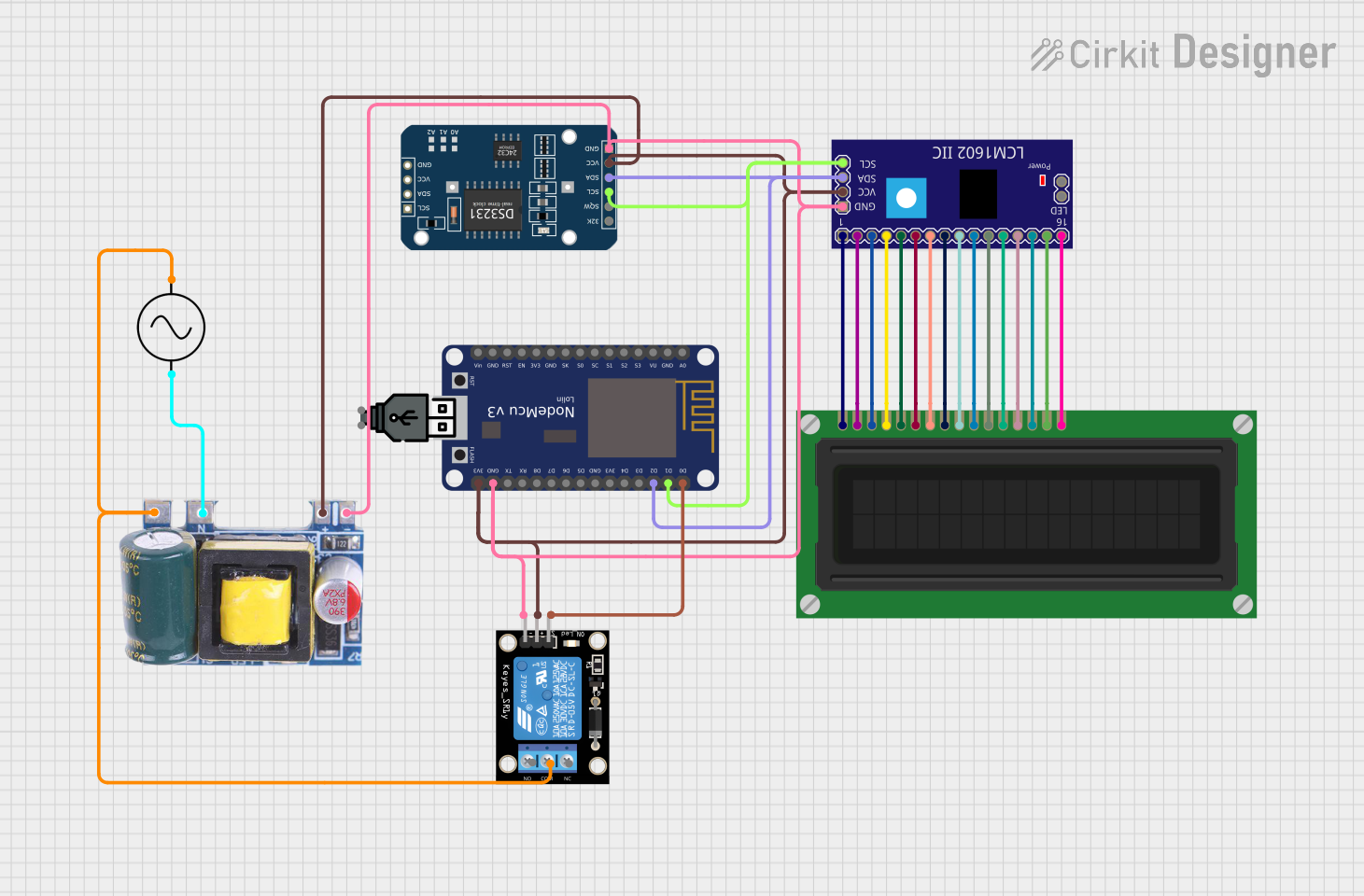
 Open Project in Cirkit Designer
Open Project in Cirkit DesignerExplore Projects Built with NODEMCU-32S

 Open Project in Cirkit Designer
Open Project in Cirkit Designer
 Open Project in Cirkit Designer
Open Project in Cirkit Designer
 Open Project in Cirkit Designer
Open Project in Cirkit Designer
 Open Project in Cirkit Designer
Open Project in Cirkit DesignerCommon Applications and Use Cases
- Home automation systems
- Smart sensors and IoT devices
- Wireless data logging
- Remote monitoring and control
- Prototyping connected devices
Technical Specifications
Key Technical Details
- Microcontroller: ESP32 (dual-core, 32-bit LX6 processor)
- Clock Speed: Up to 240 MHz
- Flash Memory: 4 MB
- SRAM: 520 KB
- Wi-Fi: 802.11 b/g/n
- Bluetooth: v4.2 BR/EDR and BLE
- Operating Voltage: 3.3V
- Input Voltage (via USB): 5V
- GPIO Pins: 30 (including ADC, DAC, PWM, I2C, SPI, UART)
- ADC Channels: 18 (12-bit resolution)
- DAC Channels: 2 (8-bit resolution)
- USB Interface: Micro-USB
- Dimensions: 58mm x 31mm
Pin Configuration and Descriptions
The NODEMCU-32S has a total of 30 GPIO pins, each with multiple functions. Below is a summary of the pin configuration:
| Pin | Function | Description |
|---|---|---|
| VIN | Power Input | Input voltage (5V) when powering the board externally. |
| GND | Ground | Ground connection. |
| 3V3 | Power Output | 3.3V output for powering external components. |
| EN | Enable | Enables or disables the board (active high). |
| IO0 | GPIO0, Boot Mode | General-purpose I/O, also used for boot mode selection. |
| IO2 | GPIO2, ADC, PWM | General-purpose I/O, analog input, or PWM output. |
| IO4 | GPIO4, ADC, PWM | General-purpose I/O, analog input, or PWM output. |
| IO5 | GPIO5, ADC, PWM | General-purpose I/O, analog input, or PWM output. |
| IO12 | GPIO12, ADC, PWM | General-purpose I/O, analog input, or PWM output. |
| IO13 | GPIO13, ADC, PWM | General-purpose I/O, analog input, or PWM output. |
| IO14 | GPIO14, ADC, PWM | General-purpose I/O, analog input, or PWM output. |
| IO15 | GPIO15, ADC, PWM | General-purpose I/O, analog input, or PWM output. |
| IO16 | GPIO16, ADC, PWM | General-purpose I/O, analog input, or PWM output. |
| IO17 | GPIO17, ADC, PWM | General-purpose I/O, analog input, or PWM output. |
| IO18 | GPIO18, SPI, PWM | General-purpose I/O, SPI interface, or PWM output. |
| IO19 | GPIO19, SPI, PWM | General-purpose I/O, SPI interface, or PWM output. |
| IO21 | GPIO21, I2C SDA | General-purpose I/O or I2C data line. |
| IO22 | GPIO22, I2C SCL | General-purpose I/O or I2C clock line. |
| IO23 | GPIO23, SPI, PWM | General-purpose I/O, SPI interface, or PWM output. |
| IO25 | GPIO25, DAC1, PWM | General-purpose I/O, DAC output, or PWM output. |
| IO26 | GPIO26, DAC2, PWM | General-purpose I/O, DAC output, or PWM output. |
| IO27 | GPIO27, ADC, PWM | General-purpose I/O, analog input, or PWM output. |
| IO32 | GPIO32, ADC, PWM | General-purpose I/O, analog input, or PWM output. |
| IO33 | GPIO33, ADC, PWM | General-purpose I/O, analog input, or PWM output. |
| IO34 | GPIO34, ADC | General-purpose I/O or analog input (input-only pin). |
| IO35 | GPIO35, ADC | General-purpose I/O or analog input (input-only pin). |
| IO36 | GPIO36, ADC | General-purpose I/O or analog input (input-only pin). |
| IO39 | GPIO39, ADC | General-purpose I/O or analog input (input-only pin). |
Usage Instructions
How to Use the NODEMCU-32S in a Circuit
Powering the Board:
- Connect the board to your computer or a USB power source using a Micro-USB cable.
- Alternatively, supply 5V to the VIN pin and connect GND to ground.
Programming the Board:
- Install the Arduino IDE and add the ESP32 board support package.
- Select "NodeMCU-32S" as the board in the Arduino IDE.
- Write your code and upload it to the board via the USB connection.
Connecting Peripherals:
- Use the GPIO pins to connect sensors, actuators, or other peripherals.
- Ensure that the voltage levels of connected devices are compatible with the 3.3V logic of the NODEMCU-32S.
Example Code: Blinking an LED
The following example demonstrates how to blink an LED connected to GPIO2:
// Define the GPIO pin where the LED is connected
const int ledPin = 2;
void setup() {
// Set the LED pin as an output
pinMode(ledPin, OUTPUT);
}
void loop() {
// Turn the LED on
digitalWrite(ledPin, HIGH);
delay(1000); // Wait for 1 second
// Turn the LED off
digitalWrite(ledPin, LOW);
delay(1000); // Wait for 1 second
}
Important Considerations and Best Practices
- Avoid applying voltages higher than 3.3V to the GPIO pins to prevent damage.
- Use level shifters if interfacing with 5V devices.
- Ensure proper grounding when connecting external components.
- Use pull-up or pull-down resistors as needed for input pins.
- Avoid powering high-current devices directly from the GPIO pins.
Troubleshooting and FAQs
Common Issues and Solutions
The board is not detected by the computer:
- Ensure the USB cable is functional and supports data transfer.
- Install the correct USB-to-serial driver for the NODEMCU-32S.
Code upload fails:
- Check that the correct board and COM port are selected in the Arduino IDE.
- Press and hold the "BOOT" button on the board while uploading the code.
Wi-Fi connection issues:
- Verify the SSID and password in your code.
- Ensure the Wi-Fi network is within range and operational.
GPIO pins not working as expected:
- Double-check the pin configuration in your code.
- Ensure no conflicting peripherals are using the same pins.
FAQs
Can I power the NODEMCU-32S with a battery?
Yes, you can use a 3.7V LiPo battery connected to the VIN and GND pins.What is the maximum current the GPIO pins can source/sink?
Each GPIO pin can source/sink up to 12mA safely.Can I use the NODEMCU-32S with MicroPython?
Yes, the NODEMCU-32S supports MicroPython, but you need to flash the MicroPython firmware first.